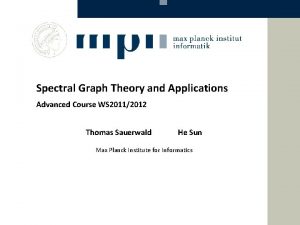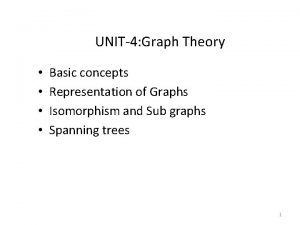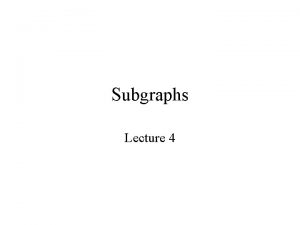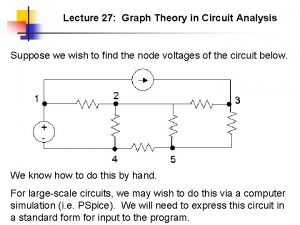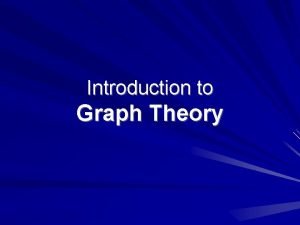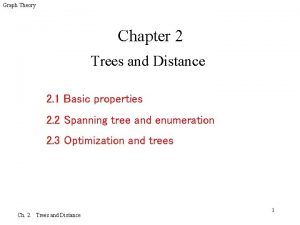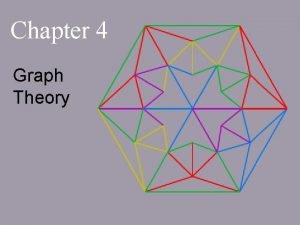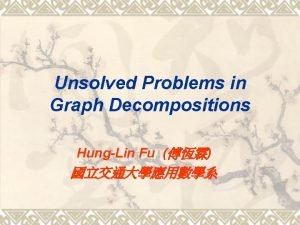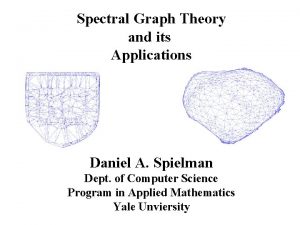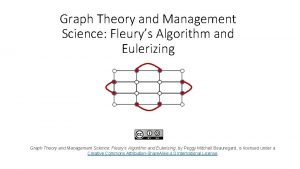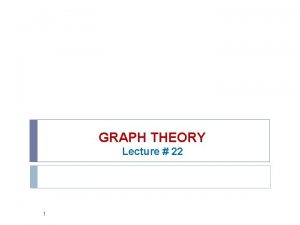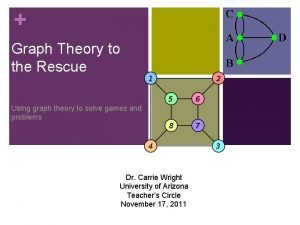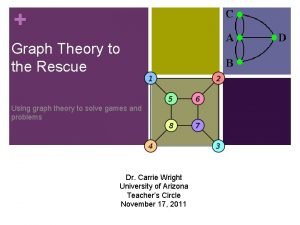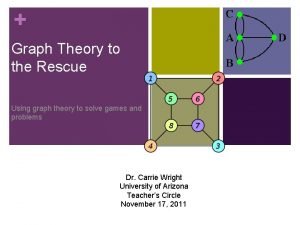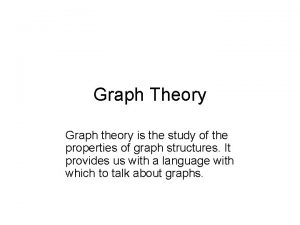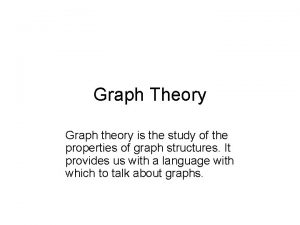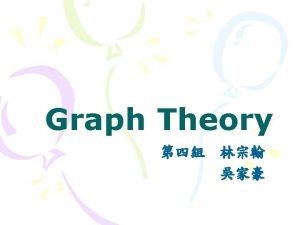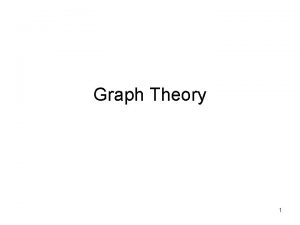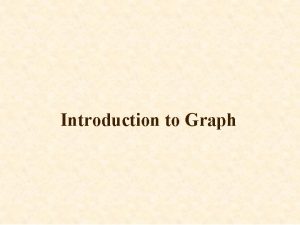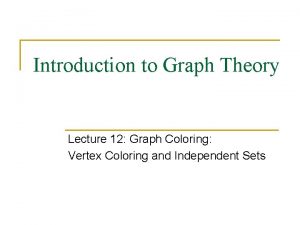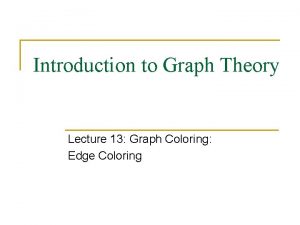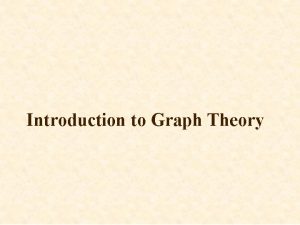Introduction to Graph Theory Graph GV E Vv





















- Slides: 21

Introduction to Graph Theory

Graph G=(V, E) V={v 1, v 2, …, vn} vertex=node E={(u, v)|(u, v) is an unorder pair of V} edge=link loop multiple edges

simple = no loops, no multiple edges v(G)=|V(G)| ε(G)=|E(G)| isomorphism G and H are isomorphic.

complete graph Kn adjacent matrix v☓v subgraph H ⊆ G if V(H) ⊆ V(G), E(H) ⊆ E(G) spanning subgraph V(H) = V(G) degree d. G(v) δ(G) △(G) ∑d(v)=2ε

Corollary In any graph, the number of verticesof odd degree is even. path u and v are connected if there is a (u, v)-path. component G 1, G 2, … G is connected if…

vertex-transitive edge-transitive Cycle

Theorem Bipartite iff no odd cycle. • If δ ≥ 2, then G contains a cycle. • If ε ≥ v, G contains a cycle. • If G is simple and δ ≥ 2, then G contains a cycle of length at least δ+1.

Connectivity κ(G)= minimum k for which G has a k-vertex cut G is k-connected if κ(G) ≥ k. 拿走 k點,可能斷。但 k-1點,一定不斷。

Edge-connectivity κ’(G)= minimum k for which G has a k-edge cut G is k-edge-connected if κ’(G) ≥ k. 拿走 k線,可能斷。但 k-1線,一定不斷。


Euler Tour Hamiltonian Cycle Hamiltonian Theorem If G is simple graph with v ≥ 3 and δ ≥ v/2, then G is hamiltonian

Hamiltonian connected How about bipartite graphs ? ? Hamiltonian laceable (Hamiltonian bi-connected)

fault-tolerant edge-fault-tolerant pancyclic bipancyclic pan=泛 panconnected bipanconnected

Matching Perfect matching Theorem G=(X, Y, E) contains a matching that saturates every vertex in X iff |N(S)| ≥ |S| for all S ⊆ X. Coroallary If G is k-regular bipartite graph with k > 0, then G has a perfect matching.

Edge coloring Edge chromatic number= χ’ Vizing Theorem G is simple, then χ’ = ∆ or ∆+1 But …

Vertex coloring Chromatic number= χ Coroallary For any graph G, χ ≤ ∆+1

πk(G) = chromatic polynomial Theorem If G is simple, then πk(G)= πk(G-e) -πk(G∙ e) πk(G)= πk(G+e) +πk(G∙ e) e e = e +

= = + + = k(k-1)(k-2)(k-3)+2 k(k-1)(k-2)+k(k-1) = k(k-1)(k 2 -3 k+3) If If k=0 … k=1… k=2… k=3…



 Bridge graph
Bridge graph Spectral graph theory applications
Spectral graph theory applications Game theory and graph theory
Game theory and graph theory Resource allocation graph and wait for graph
Resource allocation graph and wait for graph Graphdbs
Graphdbs Introduction to graph databases
Introduction to graph databases Graph theory basic concepts
Graph theory basic concepts What is a subgraph in graph theory
What is a subgraph in graph theory Shortest path in weighted graph
Shortest path in weighted graph Solving circuits using graph theory
Solving circuits using graph theory Origin of graph theory
Origin of graph theory Origin of graph theory
Origin of graph theory Insanity puzzle
Insanity puzzle Cs graph theory
Cs graph theory Forest in graph theory
Forest in graph theory Graph theory
Graph theory Geometric dual
Geometric dual Origin of graph theory
Origin of graph theory Unsolved problems in graph theory
Unsolved problems in graph theory Malthusian theory graph
Malthusian theory graph Spectral graph theory and its applications
Spectral graph theory and its applications Graph theory
Graph theory

